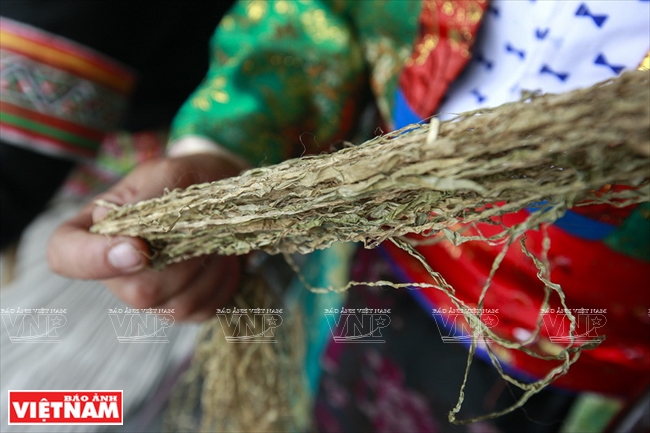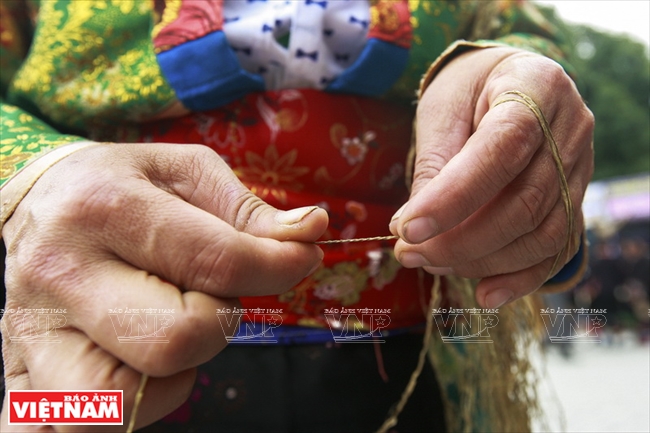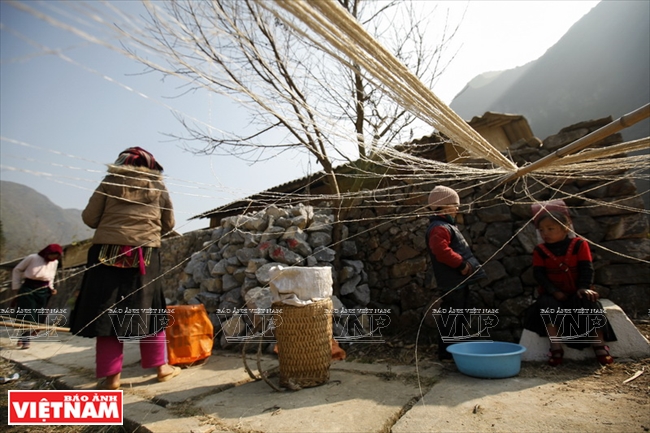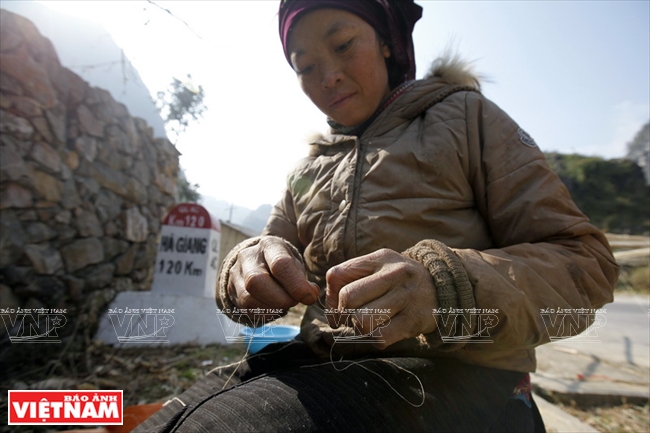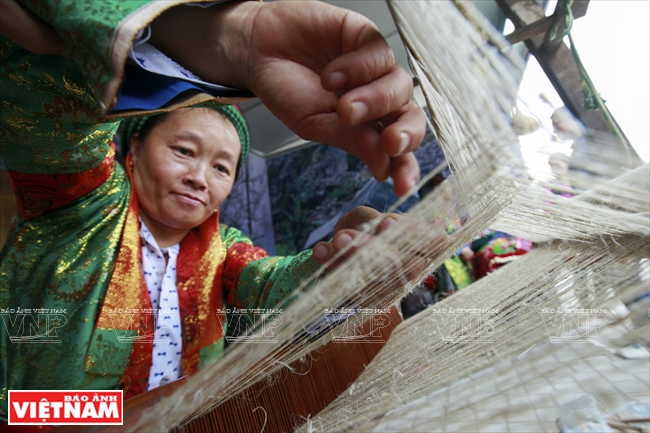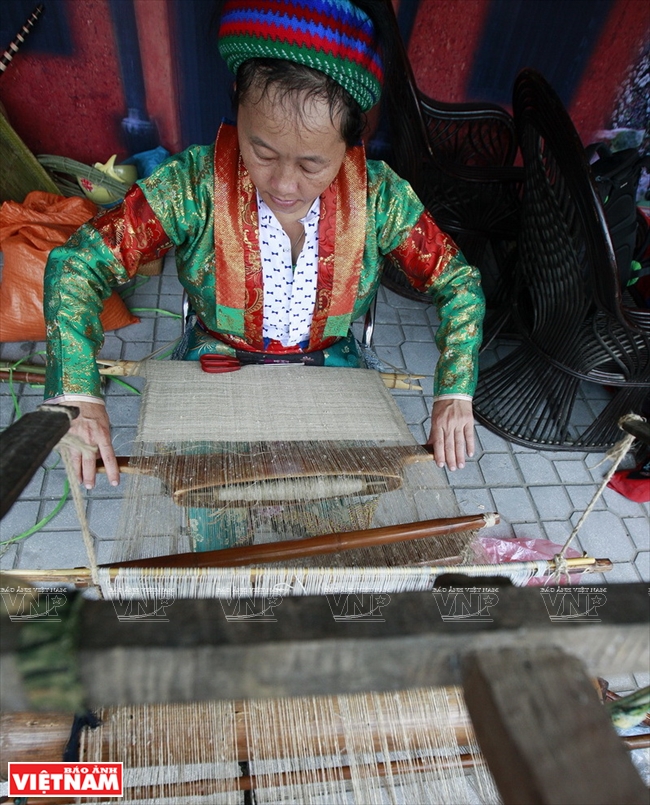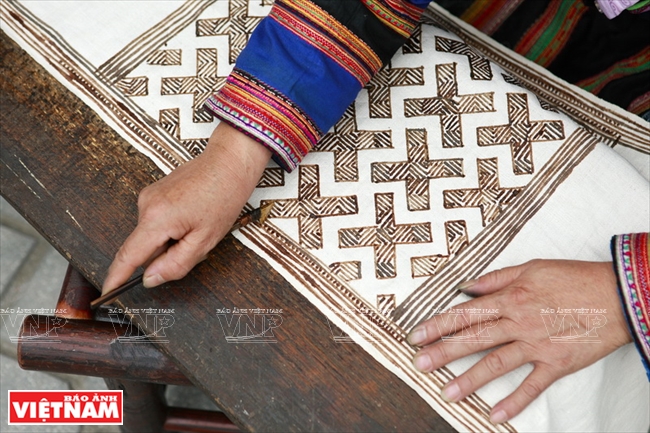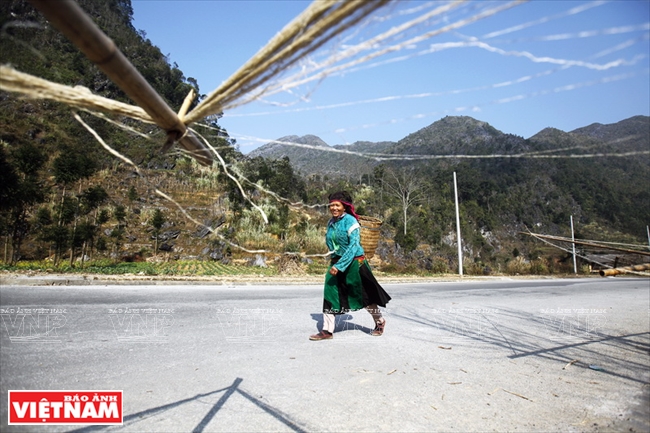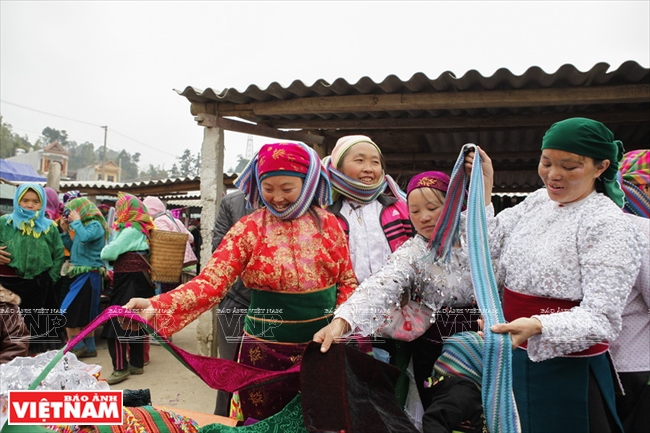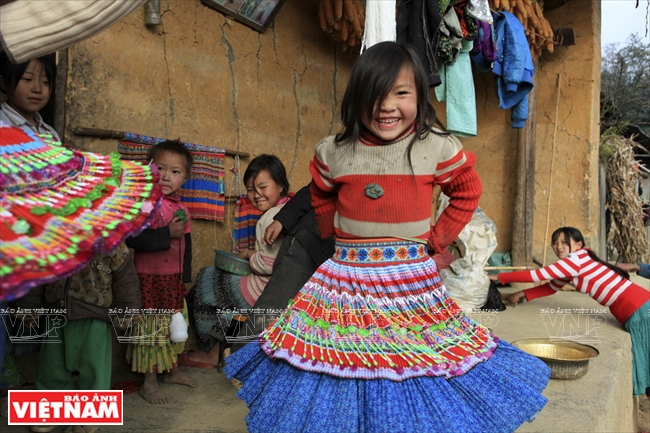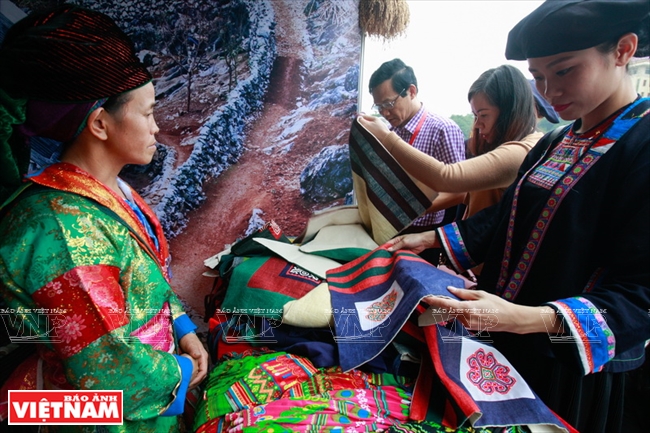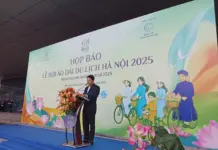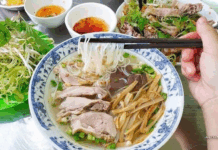The Hmong people make fabric from the cellulose fibres that grow inside of the stalks of the flax plants, also known as Linum usitatissimum. Flax is ready to be harvested for its fibres when the stem begins to turn yellow and the seeds turn brown. After harvest, flax stalks are allowed to dry in the open air for several weeks. Flax fibres are considered bast fibres which are collected from the phloem, or the inner bark of the plant. Fabrics made from these fibres are typically quite strong and durable. After harvesting, the flax stalks are dried and undergo some other stages before the most time consuming part-connecting the fibres together. For this reason, when visiting the region, one will see Hmong women always doing the work in the doorway of their house or on the way to the terraced fields or the market. The work requires the makers’ patience, skills and exact techniques.
To create a perfect joint, they must tear the flax outer fibres of the same size before connecting them and roll them into bunches which are then submerged in water for releasing fine bast fibres which can be processed and spun in yarn. They then boil the fibres which are light grey with the ashes of Trai wood for bleaching.
|
|
To make the fibres more durable, tough and fine, the Hmong women boil the fibres again with beeswax and press them for draining before the stage of hackling to separate fibres that are still clinging together. After this stage, the fine line flax is ready for spinning. The Hmong women’s looms are made from wood and have a simple structure. However, the unique traditional method of spinning requires a harmonious combination between the maker and the traditional loom.
The Hmong women often weave fibres straight with a cloth width of 50cm. After finishing, the fabric is washed several times for bleaching and pressed by a large log and a large stone to make it flat and smooth.
To create patterns and motifs on the fabric, the Hmong use the technique of beeswax drawing. They heat beeswax and use bamboo pens with metal nibs to draw the wax onto the hemp, then the wax marks will resist being dyed when the cloth is dipped in the indigo pot. To achieve dark indigo patterns, the fabric may be dyed several times. This stage is often done by skilled and experienced artisans.
From the fine linen, the Hmong people make elaborate costumes. For the Hmong, the linen weaving method and beeswax decorating skills which are handed down from generation to generation are embedded deep in their culture.
Phases to make the colourful cloth of the Hmong in Dong Van Karst Plateau has now become a unique and attractive cultural trait, fascinating visitors.
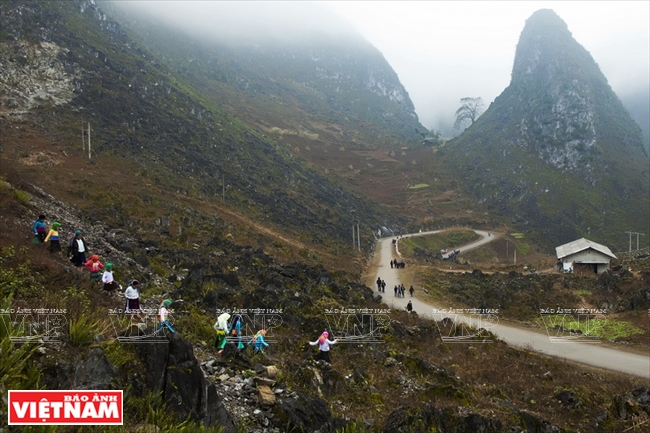 Colourful costumes of the Hmong seem to embellish the beautiful scenery of Dong Van Karst Plateau. Photo: Viet Cuong/VNP |
By Viet Cuong

